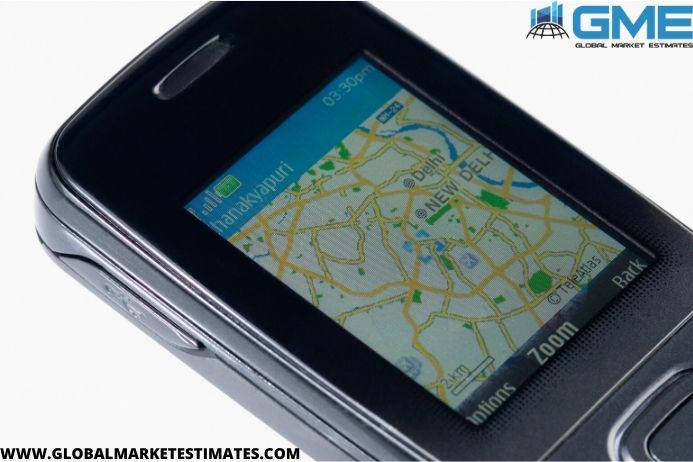Unknown to many consumers, there are numerous technologies at work that make our smartphones the irreplaceable asset that they are in our lives currently. Contrary to the popular belief, mobile devices do not transmit or send location data for determination of its location. Instead, they act as powerful receptors. Location data signals are mostly transmitted through the Global Positioning System (GPS), also known as NavStar. NavStar was developed in the United States in the late 1970s to provide users with positioning, navigation and timing services. At present there are 31 working GPS satellites in the orbit, each revolving around the earth every 12 hours or so. Each satellite continuously sends back data to the Earth to technologies, navigation systems, smartphones, wristwatches, shipping containers and accurately track the location of physical objects.
The global mobile device location determination market size was valued at USD 65.06 billion in 2019. The market is likely to expand at a CAGR of 22.9 per cent during 2019-2026. Based on a research conducted by the Global System for Mobile Communications Association (GSMA), approximately 75 per cent of the total number of mobile users would be using smartphones by the end of 2025. This massive increase in the adoption of smartphones and tablets coupled with robust internet penetration in developing countries, such as China and India would significantly drive the global mobile device location determination market.
A recent report on the global mobile device location determination market was published by Global Market Estimates Research and Consultants (GME) in March 2020. The report classifies the global mobile device location determination market on the basis of several factors. On the basis of technologies, the global mobile device location determination market is segmented into global positioning system (GPS), direction-based geolocation, and distance-based positioning, among others. Secondly, On the basis of application, the global mobile device location determination market is segmented into efficient and effective network performance and management, emergency service for subscriber safety, intelligent transport system services, location sensitive billing, and cellular fraud detection, among others. Lastly, on the basis of region, the global mobile device location determination market is segmented into North America, Europe, Asia Pacific, Central & South America and Middle East & Africa. The countries covered include: U.S., Canada, Mexico, Germany, France, UK, Italy, Spain, China, India, Japan, South Korea, Australia, Brazil, Saudi Arabia, UAE, and South Africa among others.
The report put forth by GME dedicates a chapter to the end-user landscape. The end-user landscape entails a list of current and prospective consumers prevailing across the regions. This section briefs you about company addresses, contact details, products & services, and regional presence of companies who are purchasing or are likely to purchase mobile-device location determination. The key end-users of the markets are Apple, Vivo, and OnePlus among others. The report contains a chapter dedicated to vendors operating in the market, covering raw material manufactures, equipment developers, manufacturers, and distributors. The report provides these insights on a regional level. Some of the key players operating in the mobile device location determination market are MSpy, Glympse, Life360, mLite, TrackView, Spyic, iSharing, Spy Globe, Trackmate, and Hoverwatch, among others.

